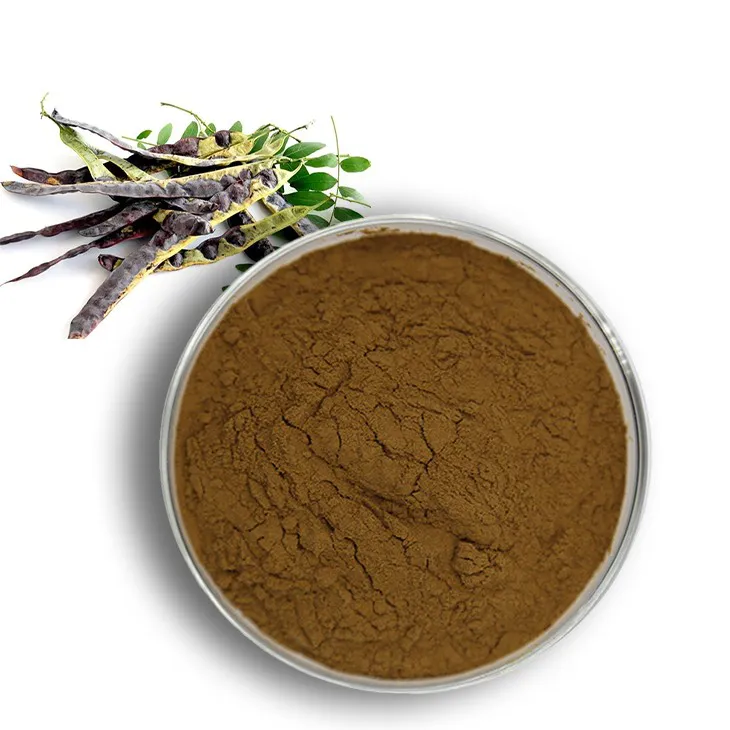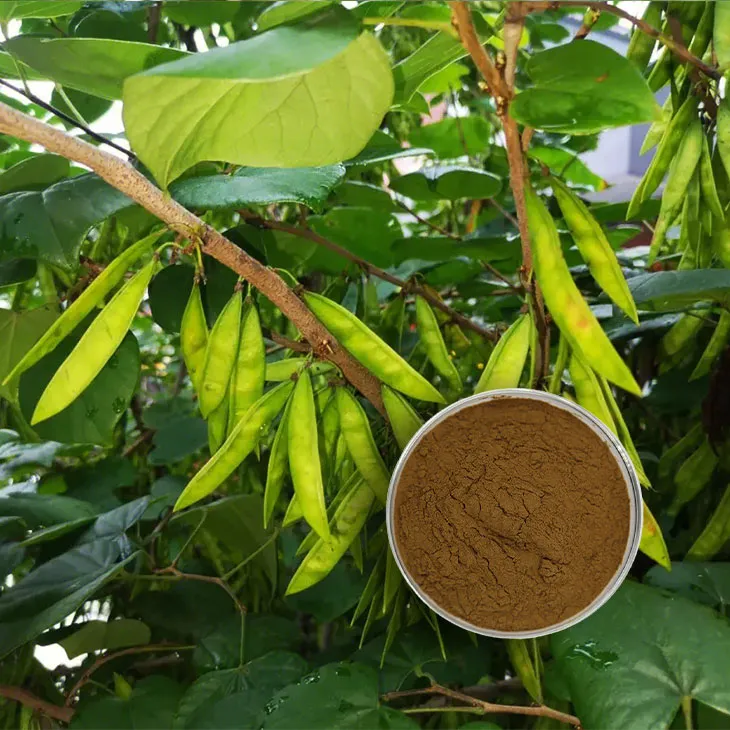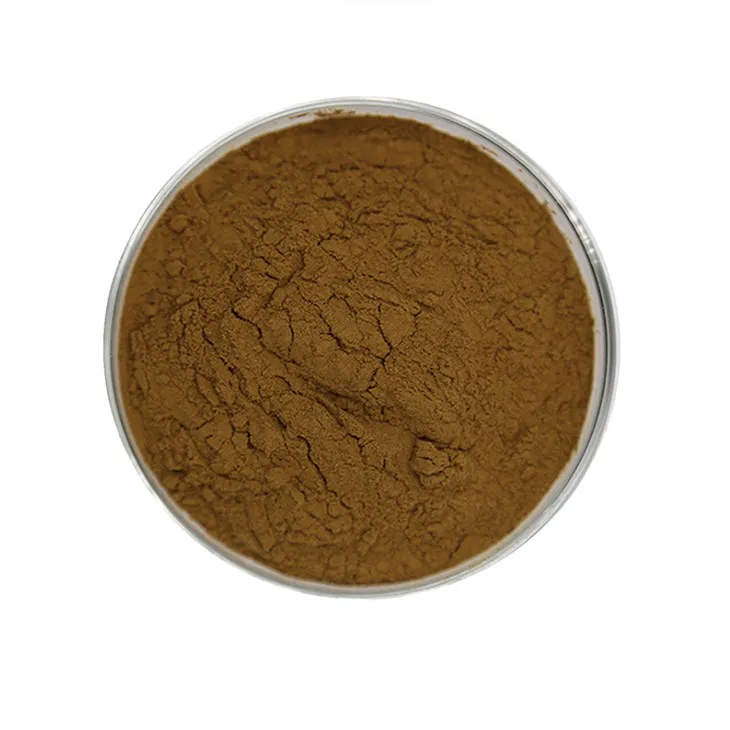- 0086-571-85302990
- sales@greenskybio.com
Saponin Extract: Benefits and Consumption Guide
2024-11-13

1. Introduction to Saponin Extracts
Saponin Extracts have been garnering significant attention in recent years due to their potential health - promoting properties. Saponins are a class of chemical compounds that are widely distributed in the plant kingdom. They are characterized by their complex molecular structures, which typically consist of a steroid or triterpenoid aglycone linked to one or more sugar chains. These unique structures endow saponins with a diverse range of biological activities.
The presence of saponins in plants serves various functions. In plants, they play roles in defense mechanisms against pathogens and herbivores. For example, some saponins can disrupt the cell membranes of invading microorganisms or insects, thereby protecting the plant from being attacked. This natural defense mechanism in plants has led to the exploration of Saponin Extracts for potential applications in human health.

2. Health Benefits of Saponin Extracts
2.1. Natural Detoxifiers
One of the key benefits of saponin extracts is their role as natural detoxifiers. The human body is constantly exposed to various toxins from the environment, diet, and internal metabolic processes. Saponins can assist the body in eliminating these toxins more efficiently.
Saponins work by enhancing the function of the liver and kidneys, which are the body's major detoxifying organs. In the liver, saponins can stimulate certain enzymes involved in the metabolism of toxins. These enzymes can break down harmful substances into more water - soluble forms that can be easily excreted by the kidneys. For instance, some studies have shown that saponin - rich plant extracts can increase the activity of cytochrome P450 enzymes in the liver, which are crucial for the detoxification of many drugs and environmental pollutants.
2.2. Potential Anti - Cancer Properties
Another area of great interest is the potential anti - cancer properties of saponin extracts. Although research in this area is still in its early stages and more in - depth studies are needed, there are some promising findings.
Some saponins have been shown to exhibit anti - proliferative effects on cancer cells. They can interfere with the cell cycle of cancer cells, preventing them from dividing and multiplying uncontrollably. For example, certain triterpenoid saponins isolated from medicinal plants have been found to induce apoptosis (programmed cell death) in cancer cells. Additionally, saponins may also have anti - angiogenic properties, which means they can inhibit the formation of new blood vessels that are required for tumor growth and metastasis. However, it is important to note that these findings are based on in - vitro and in - vivo studies in animals, and further research is necessary to determine their effectiveness and safety in human cancer treatment.
2.3. Other Health - Promoting Effects
Saponin extracts also offer other health - promoting effects. They can have positive impacts on the cardiovascular system. Some saponins have been shown to help lower cholesterol levels. By binding to cholesterol in the digestive tract, they can prevent its absorption into the bloodstream, thus reducing the overall cholesterol levels in the body. This, in turn, can lower the risk of developing cardiovascular diseases such as heart attacks and strokes.
In addition, saponins may have immunomodulatory effects. They can enhance the immune system by stimulating the production of immune cells such as lymphocytes and macrophages. A stronger immune system is better equipped to fight off infections and diseases. Saponin - rich plants have been used in traditional medicine for centuries to boost the body's defense mechanisms.

3. Differences in Saponin Extracts from Different Plants
Not all saponin extracts are the same, as they can vary significantly depending on the plant source. Different plants contain different types and amounts of saponins, which in turn result in diverse biological activities and health benefits.
3.1. Ginseng Saponins
Ginseng is a well - known plant rich in saponins, known as ginsenosides. Ginseng saponins have been extensively studied for their adaptogenic properties. They can help the body adapt to stress, whether it is physical, mental, or environmental stress. Ginseng saponins also have potential effects on improving cognitive function, enhancing physical endurance, and regulating blood sugar levels.
3.2. Quillaja Saponins
Quillaja saponaria, a South American tree, is another source of saponins. Quillaja saponins are often used in the food and pharmaceutical industries as emulsifiers and adjuvants. They have excellent surfactant properties, which make them useful for creating stable emulsions in products such as vaccines and food emulsions. In addition, some studies have suggested that quillaja saponins may also have immunostimulatory effects, although more research is needed to fully understand their potential health benefits.
3.3. Soybean Saponins
Soybeans are a common dietary source of saponins. Soybean saponins have been associated with several health benefits, including antioxidant and anti - inflammatory properties. They may also play a role in reducing the risk of certain cancers, such as breast and prostate cancers. However, the bioavailability of soybean saponins may be affected by factors such as food processing methods and the presence of other dietary components.

4. Quality Assessment of Saponin Extracts
When considering the use of saponin extracts, it is crucial to assess their quality. High - quality saponin extracts are more likely to provide the expected health benefits.
4.1. Purity
Purity is an important factor in quality assessment. A pure saponin extract should contain a high concentration of saponins with minimal impurities. Impurities can include other plant compounds, residual solvents from the extraction process, or contaminants. Testing for purity can be done using various analytical techniques such as high - performance liquid chromatography (HPLC) or gas chromatography - mass spectrometry (GC - MS). These techniques can accurately identify and quantify the saponin content and detect the presence of any unwanted substances.
4.2. Source and Authenticity
Knowing the source of the saponin extract is essential. The plant species from which the saponins are extracted should be clearly identified. This is important not only for ensuring the consistency of the product but also for safety reasons. Some plants may contain toxic compounds in addition to saponins, and incorrect identification of the plant source could lead to potential health risks. Authentication of the source can be achieved through botanical identification methods and genetic testing in some cases.
4.3. Standardization
Standardization of saponin extracts is also necessary. This involves ensuring that the extract contains a consistent amount of saponins per unit dose. Standardized saponin extracts are more reliable in terms of their biological activity and health - promoting effects. Manufacturers should follow good manufacturing practices (GMP) to standardize the production process and ensure product quality.

5. Storage and Shelf - Life of Saponin Extracts
Proper storage of saponin extracts is crucial to maintain their quality and potency.
5.1. Storage Conditions
Saponin extracts should be stored in a cool, dry place away from direct sunlight. Exposure to heat, moisture, and light can cause degradation of the saponins and reduce their effectiveness. It is advisable to store saponin extracts in airtight containers to prevent oxidation and contamination by air - borne substances. For example, if stored in a humid environment, saponins may absorb moisture, which can lead to hydrolysis and loss of their biological activity.
5.2. Shelf - Life
The shelf - life of saponin extracts can vary depending on the type of extract, storage conditions, and the presence of preservatives. In general, well - stored saponin extracts can have a shelf - life of one to two years. However, it is always best to check the expiration date on the product label. As the saponin extract approaches its expiration date, its potency may decrease, and it may not provide the expected health benefits.
6. Consumption Guide for Saponin Extracts
Understanding how to consume saponin extracts properly is essential to maximize their positive effects while minimizing potential risks.
6.1. Dosage
The appropriate dosage of saponin extracts depends on several factors, including the type of saponin, the purpose of consumption, and the individual's health status. For example, when using ginseng saponin extracts for stress management, a typical dosage may range from 100 - 500 mg per day. However, for more potent saponin extracts with potential anti - cancer properties, the dosage may be much lower and should be determined under the guidance of a healthcare professional. It is important not to exceed the recommended dosage, as excessive consumption of saponin extracts may lead to adverse effects such as digestive discomfort or allergic reactions.
6.2. Consumption Frequency
The frequency of consumption also varies. Some saponin extracts can be consumed daily, while others may be more suitable for intermittent use. For example, soybean saponin - rich foods can be part of a daily diet, providing a continuous source of saponins for health maintenance. On the other hand, certain medicinal plant saponin extracts with stronger pharmacological effects may be consumed on a weekly or monthly basis, depending on the treatment plan.
6.3. Precautions
There are several precautions to keep in mind when consuming saponin extracts. Pregnant and lactating women should be especially cautious, as the safety of some saponin extracts during pregnancy and lactation has not been fully established. People with underlying health conditions such as liver or kidney diseases should consult their healthcare providers before using saponin extracts, as these extracts may interact with medications or exacerbate existing health problems. Additionally, individuals with a history of allergic reactions to plants should be aware of the potential for allergic reactions to saponin extracts, especially if the extracts are from plants to which they are allergic.
7. Conclusion
Saponin extracts offer a wide range of potential health benefits, from acting as natural detoxifiers to having possible anti - cancer properties. However, due to the differences in saponin extracts from different plants, it is important to carefully assess their quality, store them properly, and follow a proper consumption guide. By doing so, consumers can make the most of the positive effects of saponin extracts while ensuring their safety and well - being.
FAQ:
What are the main health benefits of saponin extracts?
Saponin extracts have several main health benefits. They can act as natural detoxifiers, which helps the body eliminate toxins more efficiently. Additionally, they potentially have anti - cancer properties, although more research in this area is still required.
Why is it important to distinguish saponin extracts from different plants?
It is important to distinguish saponin extracts from different plants because they may have different properties, qualities, and potential effects on the body. Different plants may produce saponin extracts with varying levels of purity, potency, and side - effect profiles. Understanding these differences is crucial for proper consumption and to ensure maximum benefits while minimizing risks.
How can one assess the quality of saponin extracts?
Quality assessment of saponin extracts can be done through several methods. Firstly, look at the source of the extract. Reputable and reliable suppliers are more likely to provide high - quality products. Secondly, check for purity levels, which may be indicated on the product label or through third - party testing reports if available. Also, the manufacturing process can affect quality. For example, extracts produced using advanced and clean extraction techniques are generally of better quality. Additionally, look for any certifications or quality marks associated with the product.
What are the proper storage conditions for saponin extracts?
Proper storage of saponin extracts is important to maintain their effectiveness. Generally, they should be stored in a cool, dry place away from direct sunlight. Most saponin extracts should be kept in air - tight containers to prevent exposure to moisture and air, which can cause degradation. Some may also require refrigeration, so it is essential to follow the storage instructions provided on the product label.
How often should one consume saponin extracts?
The consumption frequency of saponin extracts depends on various factors such as the type of extract, individual health conditions, and the intended purpose. It is advisable to start with a low - dose and gradually increase if well - tolerated. In general, it is best to follow the recommended dosage instructions provided by a healthcare professional or as indicated on the product label. Over - consumption may lead to potential side - effects, so moderation is key.
Related literature
- Saponin - Rich Plants: A Comprehensive Review of Their Properties and Potential Applications"
- "The Role of Saponins in Detoxification: Current Research and Future Perspectives"
- "Saponin Extracts in Cancer Research: A Review of the Latest Findings"
- ▶ Hesperidin
- ▶ Citrus Bioflavonoids
- ▶ Plant Extract
- ▶ lycopene
- ▶ Diosmin
- ▶ Grape seed extract
- ▶ Sea buckthorn Juice Powder
- ▶ Fruit Juice Powder
- ▶ Hops Extract
- ▶ Artichoke Extract
- ▶ Mushroom extract
- ▶ Astaxanthin
- ▶ Green Tea Extract
- ▶ Curcumin
- ▶ Horse Chestnut Extract
- ▶ Other Product
- ▶ Boswellia Serrata Extract
- ▶ Resveratrol
- ▶ Marigold Extract
- ▶ Grape Leaf Extract
- ▶ New Product
- ▶ Aminolevulinic acid
- ▶ Cranberry Extract
- ▶ Red Yeast Rice
- ▶ Red Wine Extract
-
Purple Sweet Potato Extract
2024-11-13
-
Honeysuckle Pollen
2024-11-13
-
Beetroot juice Powder
2024-11-13
-
Lycopene
2024-11-13
-
Citrus Aurantium Extract
2024-11-13
-
White Willow Bark Extract
2024-11-13
-
Maca Extract
2024-11-13
-
Rosemary extract
2024-11-13
-
Selenium yeast
2024-11-13
-
Bamboo Leaf extract
2024-11-13





















